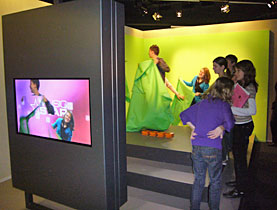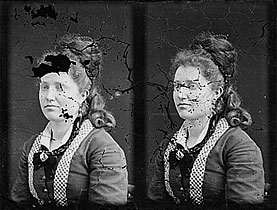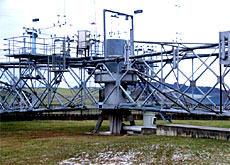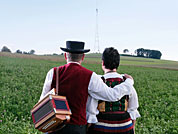Beromünster takes its leave of the airwaves

The medium wave transmitter at Beromünster in central Switzerland fell silent forever on Sunday night, 77 years and seven months after it first came into service.
For many Swiss, there will be more than a touch of sadness, as Beromünster was a household name they grew up with; it is without doubt an integral part of the country’s radio history.
Look on the dial of any decent radio from the past. Beromünster features on the far right along with other great names, for example Lyons, Stuttgart, Vienna, Berlin, Monte Ceneri (southern Switzerland), AFN and Budapest.
With technology advancing to VHF and now DAB, the transmitter’s days were numbered and the decision was made a few years ago to pull the plug on what finally was broadcasting a Swiss country music programme on 531 kHz.
Two men who “grew up” with the transmitter, technicians Hermann Weber and Hans Moser, have been looking after it in its final years. They have each clocked up 40 years of service.
“At present there are only two of us here and we do everything from being caretakers to repairing the transmitter, and we’re responsible for the programme being broadcast until midnight on December 28,” Weber told swissinfo.
“Nostalgia”
He said he would look back on his career at Beromünster with “a little bit of nostalgia, but then a new stage in life will begin – retirement – that’s also nice”.
Beromünster is something of a misnomer because it is not actually located in the commune of the same name but in neighbouring Gunzwil.
It’s worth remembering that at the beginning, the radio transmitter was considered great competition for the daily newspapers and that after a struggle, the transmitter broadcast only two new bulletins a day.
Then came the Second World War. There were weekly commentaries on the situation from radio legend Jean-Rodolphe von Salis, and everyone was glued not to the box but to the radio.
Beromünster was respected, not just in Switzerland, as the only independent German-language broadcaster.
After the war, Beromünster was as popular as ever. The programmes were not just about national events and music, but also entertainment.
“At that time we only had a radio at home with medium wave, so we always had Beromünster on,” Weber recalls.
“Keep quiet”
“At 12.30pm the news came on and we all had to keep quiet. We didn’t have a television then, so in the evening we listened to the stories of [Swiss author] Jeremias Gotthelf and the whole family sat in front of the radio.”
Later on, Weber recalls that he had reached the “awkward adolescent age”, switched off from Beromünster and tuned into Luxembourg, where there was different music.
“When our parents came into the room, they used to say: ‘This music is not for you’.”
Significant moments for Beromünster fans were also commentaries from Heiner Gautschi in New York and Theodor Haller in London. And there were concerts from radio orchestras in Switzerland that no longer exist.
After 40 years working at the installation, now run by Swisscom Broadcast, Weber is still very much a fan of what the transmitter broadcasts.
“Transmitter is working?”
“When I listen to the radio, it’s on the Musikwelle (mostly Swiss traditional music played by German-language Swiss radio from the transmitter). On the one hand it’s to hear whether the transmitter is working (laughs), on the other I like the programme. It’s varied and plays music I like.”
The transmitter will die on December 28 but there are proposals to keep the installation intact as a museum. Weber is certainly not convinced about that idea.
“After the closure, I’d prefer that all the signs of the transmitter disappear. When a transmitter doesn’t broadcast, it’s not a transmitter anymore and there’s not enough here for an interesting museum.”
Weber and his colleague Moser are not giving too much away about what they will be doing when midnight strikes on Sunday.
But you may just find them in the control room drinking a glass to an old friend that has been with them for the best part of their working lives.
swissinfo, Robert Brookes in Beromünster
The first Beromünster transmitter was supplied by the Marconi Wireless Telegraph Company of London.
The transmitting tower is called the Blosenbergturm and went into service in 1931. The first test programme was broadcast in May that year and it officially opened on June 11.
The tower is 215 metres high and has a cabin at 150 metres.
In 1950, the transmitter started broadcasting on 529 kHz. A year later the Schindler company built a lift at the transmitter to take staff up to the cabin.
In 1978, the Beromünster frequency was changed to 531 kHz.
Since 1996, German-language Swiss radio (DRS) has been broadcasting its Musikwelle programmes (Swiss traditional country music) from the transmitter.
DRS will continue to broadcast its Musikwelle programmes after Beromünster has closed. The estimated 150,000 listeners can tune into them on DAB (digital audio broadcasting), satellite, cable and the internet.
It is not clear what will happen to the transmitter after it has ended operations.
The Swiss Federal Commission for Monument Preservation considers the installation of national importance and something which has to be preserved.
Other interested organisations and Swisscom Broadcast have been looking for solutions to keep it for future generations.

In compliance with the JTI standards
More: SWI swissinfo.ch certified by the Journalism Trust Initiative




You can find an overview of ongoing debates with our journalists here. Please join us!
If you want to start a conversation about a topic raised in this article or want to report factual errors, email us at english@swissinfo.ch.